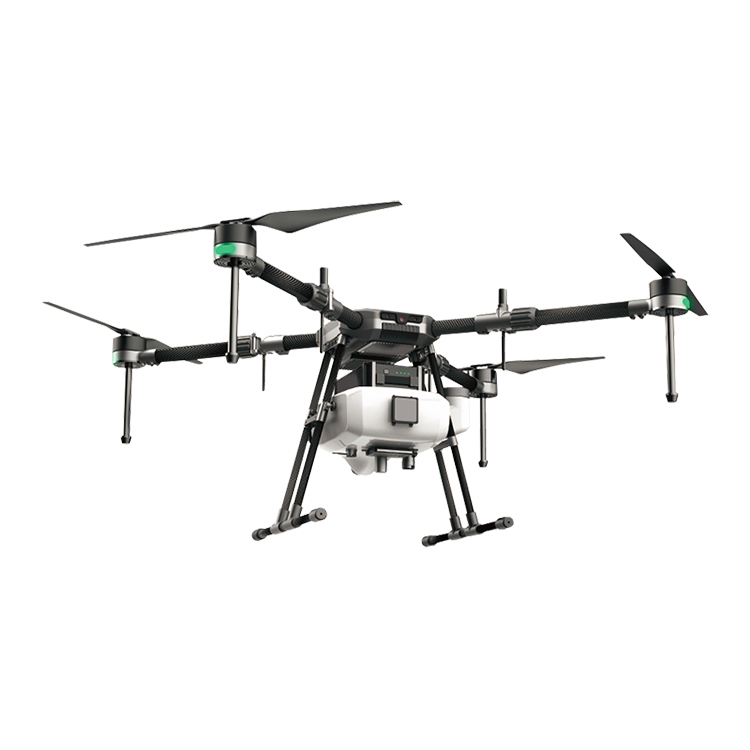Drone AI Tech. will Become the Future of Farming

While artificial intelligence is commonly employed within customer service, manufacturing, and retail, one sector that may not immediately spring to mind when one thinks of AI is agriculture. Nevertheless, farmers are increasingly relying on this technology to produce their crops.
Although America is in the lead when it comes to AI in agriculture, many farmers all over the world have been adopting program-based technology to help their farms thrive. These AI-powered computers and robots have been successfully undertaking important farming tasks such as precision farming, monitoring of crops, and crop analysis.
How Does AI Benefit Agriculture?
Robots with cognitive, human characteristics such as speech recognition, visual perception, and even decision-making have been increasing the efficacy of farm work. From manual labor on the farm, for example, plowing the land, sowing seeds, water management, pest and weed control (prevention and cure), and picking crops, to more in-depth, micro-analytics such as predicting the weather, measuring soil acidity, and calculating light levels, this new equipment gives the farmer a thorough overview of the health of their farm, and informs them of the optimal time for each agricultural task. Before AI, this thorough land and crop evaluation and risk assessment would have taken weeks, but now, ever-important information is available by simply flying a drone out over a farm.
Drones can detect stunted crops, weed- or pest-damaged land, and dryness, and can report back on the general quality of the land. Profit-boosting algorithms can inform and advise farmers on the best way to maximize their yield, and human-like robots can do manual labor faster than a human could. Using computer vision to detect weeds and remove them, mass-spraying of herbicide is avoided and a lot of money saved in the process, thus producing cleaner, healthier crops in a fraction of the time.
With all these abilities at their fingertips, including apps that can detect crop disease and provide practical solutions, and fully comprehensive and detailed weather-predicting programs, the pros for AI in agriculture are virtually endless.
However, the nature of the agricultural industry generally places farms in rural areas. The drones give the user the option of either watching live video footage while the drone is in flight or downloading the material to watch at a later time. Downloading the footage can be a challenge in these remote areas since a high-speed internet connection may not be present in the area.
Drone companies are starting to make agricultural drones available for rent to better sell their tech. The companies claim it gives skeptics a chance to see the advantages before spending upwards of $1000 on their own. After taking a trial flight, farmers can usually see how useful a drone can be and realize it’s worth the investment. For example, an invasive weed species can be easily missed by humans but an AI drone can seek it out and swiftly nip it in the bud, saving crops, money and time in the process.
Advanced agriculture drones such as the DJI are waterproof, dustproof, and weatherproof and can navigate and fly in most weather conditions, including fog. They are even equipped with a floodlight to fly safely at night to spraying for farming
Obstacle avoidance technology and highly sophisticated software can plan a flight and map out the area before precision-spraying crops using AI. A drone that can carry up to 60 liters of chemicals can get the job done 50 times faster than manual spraying and works out to be twice as cost-effective as and more precise than using a helicopter.
What are the Potential Drawbacks of Utilizing AI in Agriculture?
The increase in AI and related automation technologies for the agriculture industry is not only inevitable but also a matter of survival, and farms that aren’t able to upgrade to AI machinery might start to lag behind in comparison to those who have already jumped on the bandwagon. That said, AI in agriculture can prove to be extremely expensive and smaller-scale farmers might not have access to that kind of funding.
Another area that will be hit hard by the increase of artificial intelligence in agriculture will be employment. A deficiency in farming jobs and farm workers has already started and will worsen with the increasing advancement and availability of these technologies.
However, taking climate change into consideration, as well as the fact that population increase means that there will be two billion more mouths to feed by the year 2050, AI in agriculture seems like a logical way forward.
4 rotors plant protection UAV 10KGS agriculture drone sprayer
Agriculture spraying drone can replace the traditional pesticide sprayer and it's speed is 40times of the traditional sprayer. It will save 90% water and 30%-40% pesticide. Small droplet diameter make the pesticide more well-distribute and improve the effect. At the same time, it will make the people faraway from the pesticide and reduce the pesticide remain of the crop.


